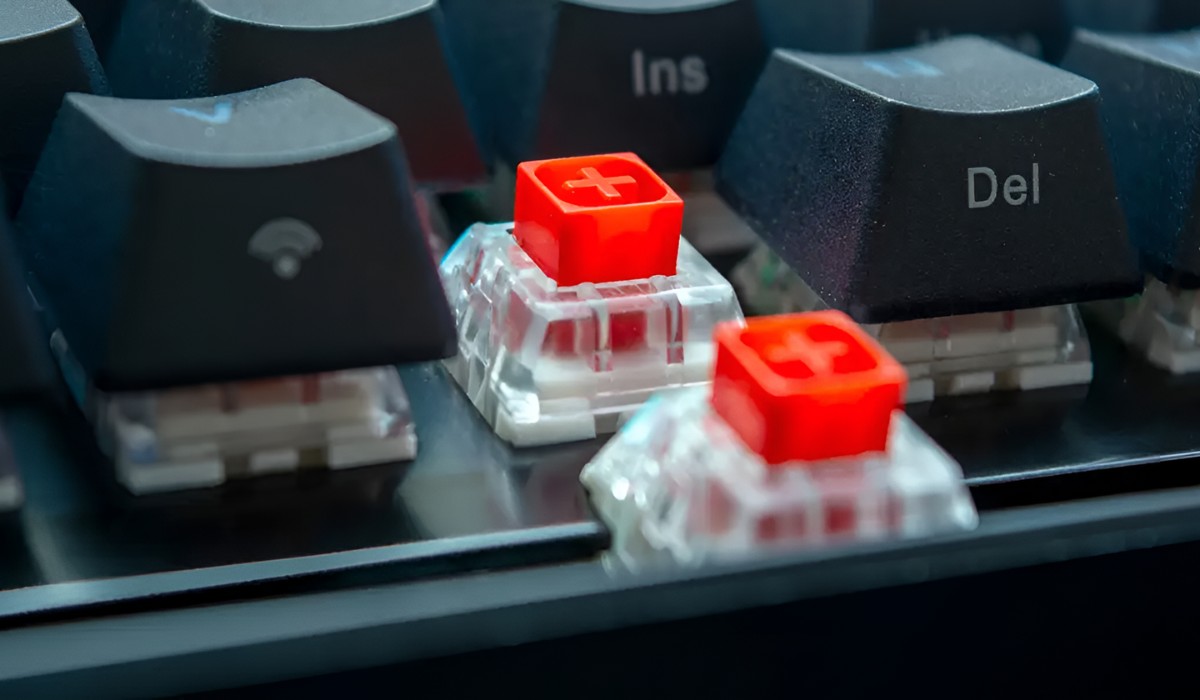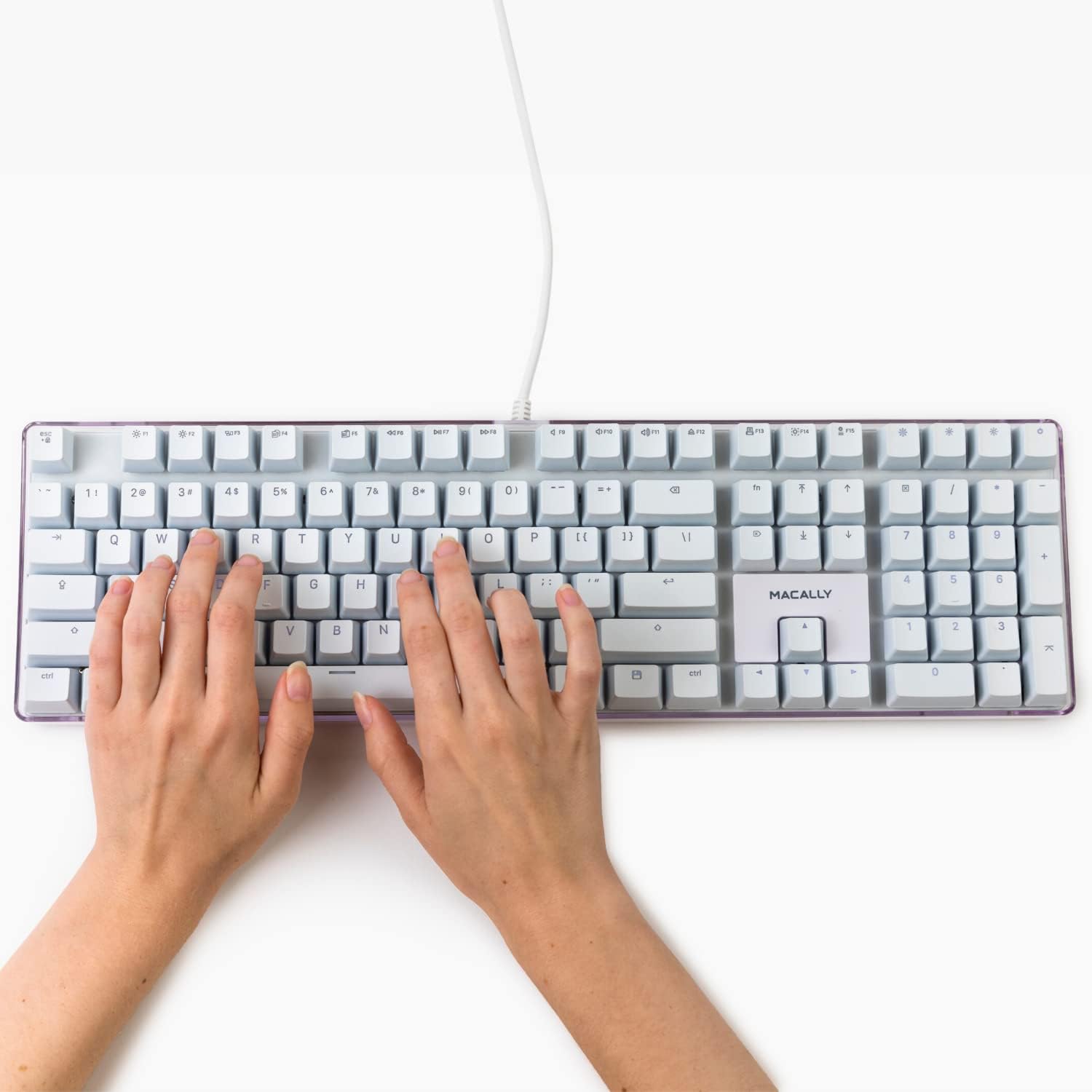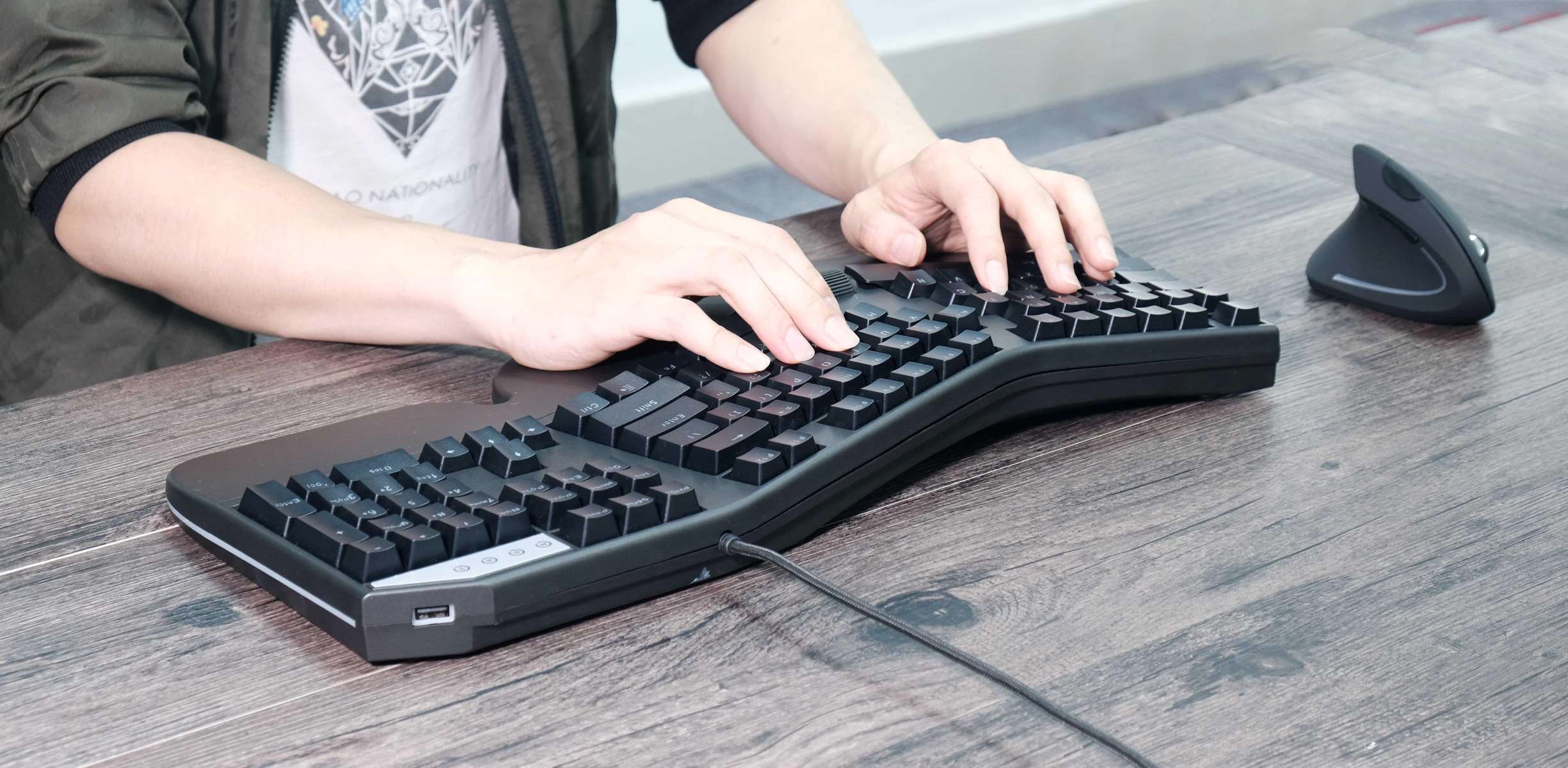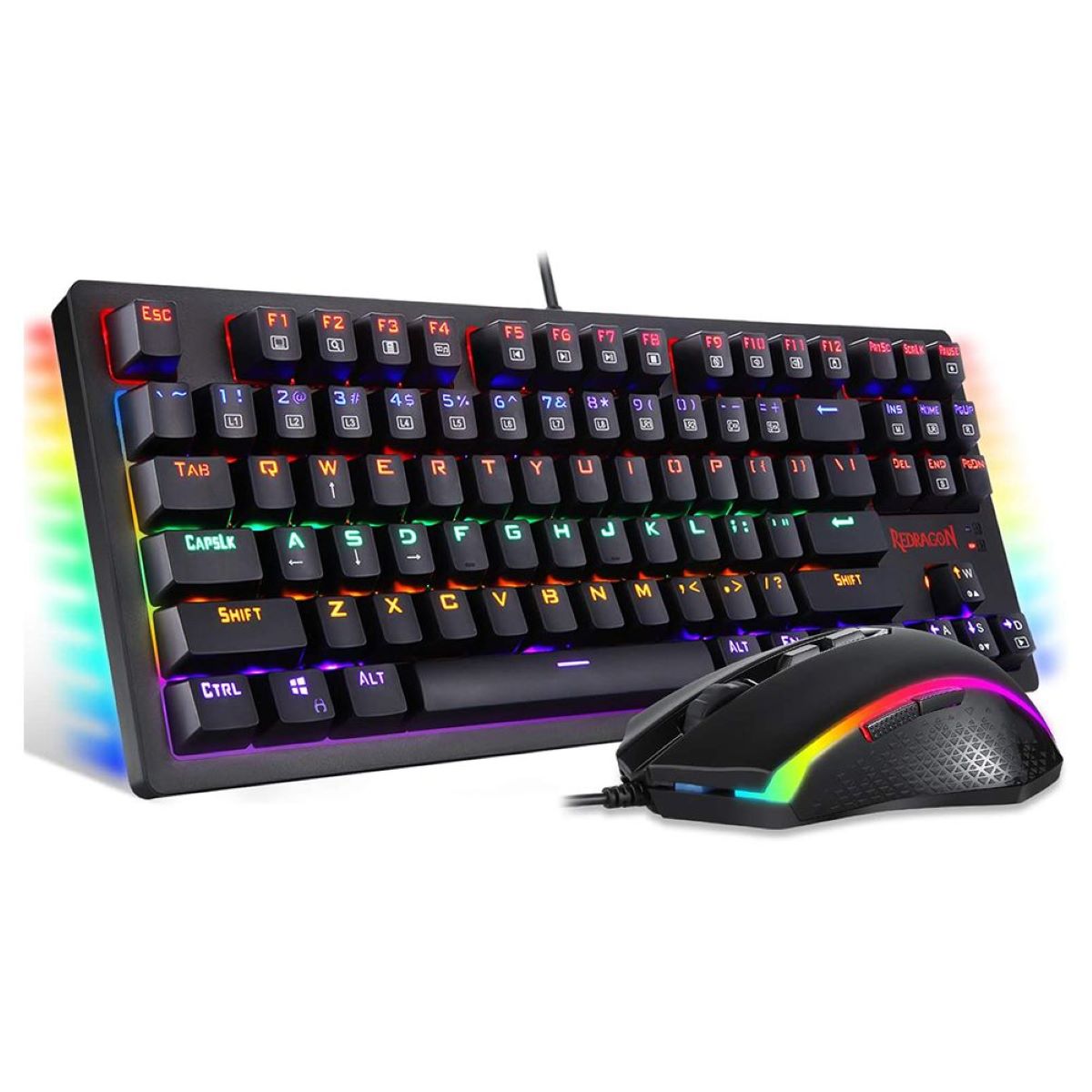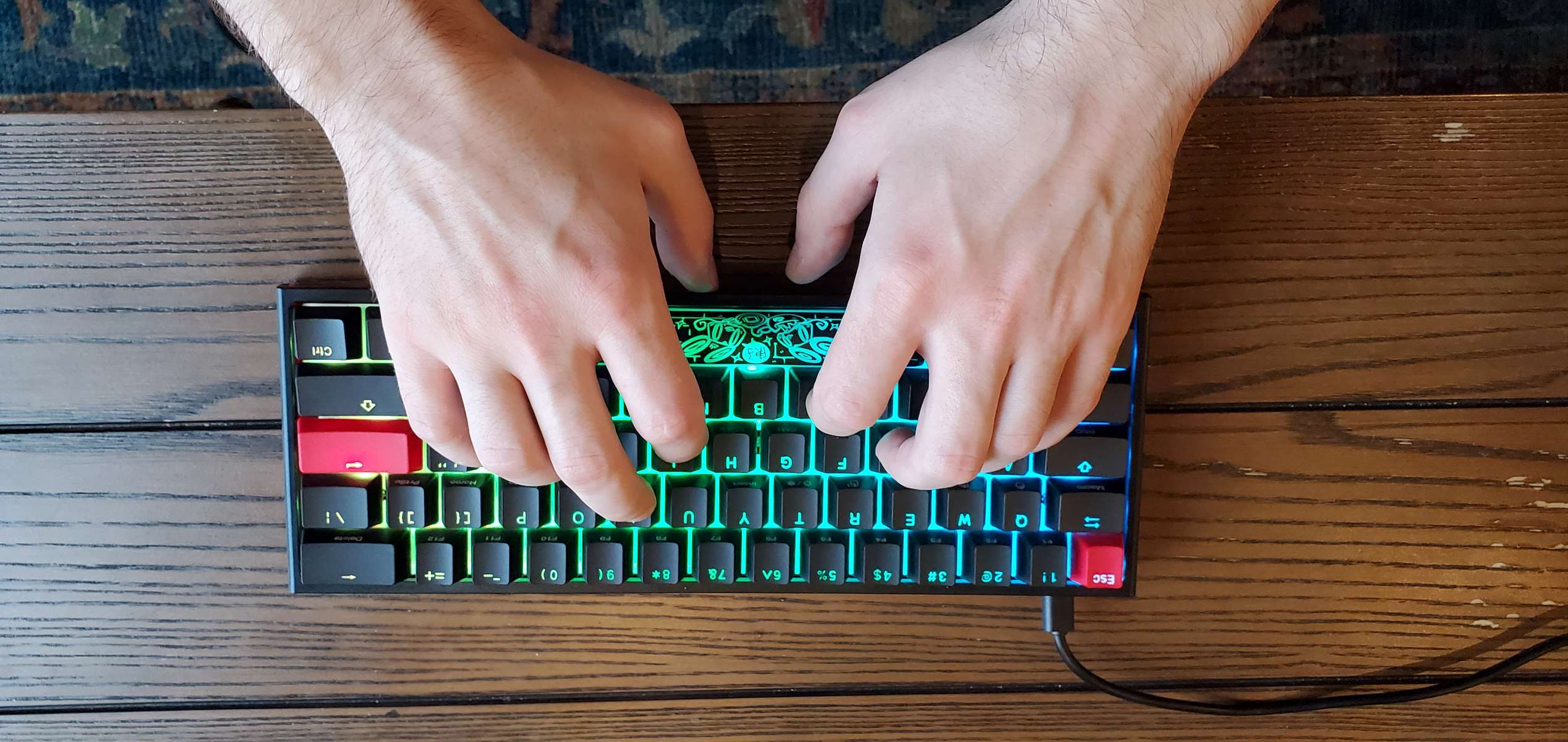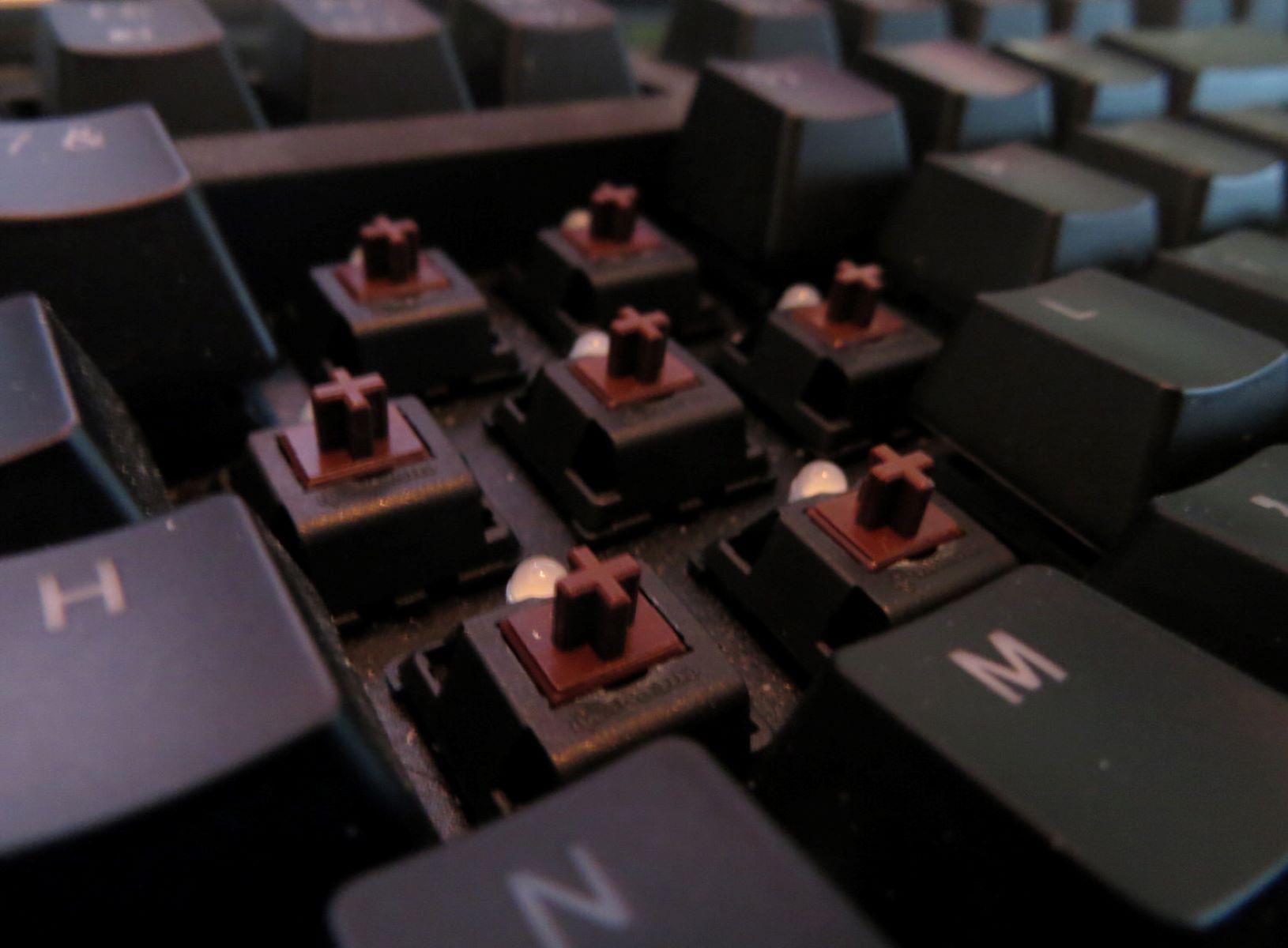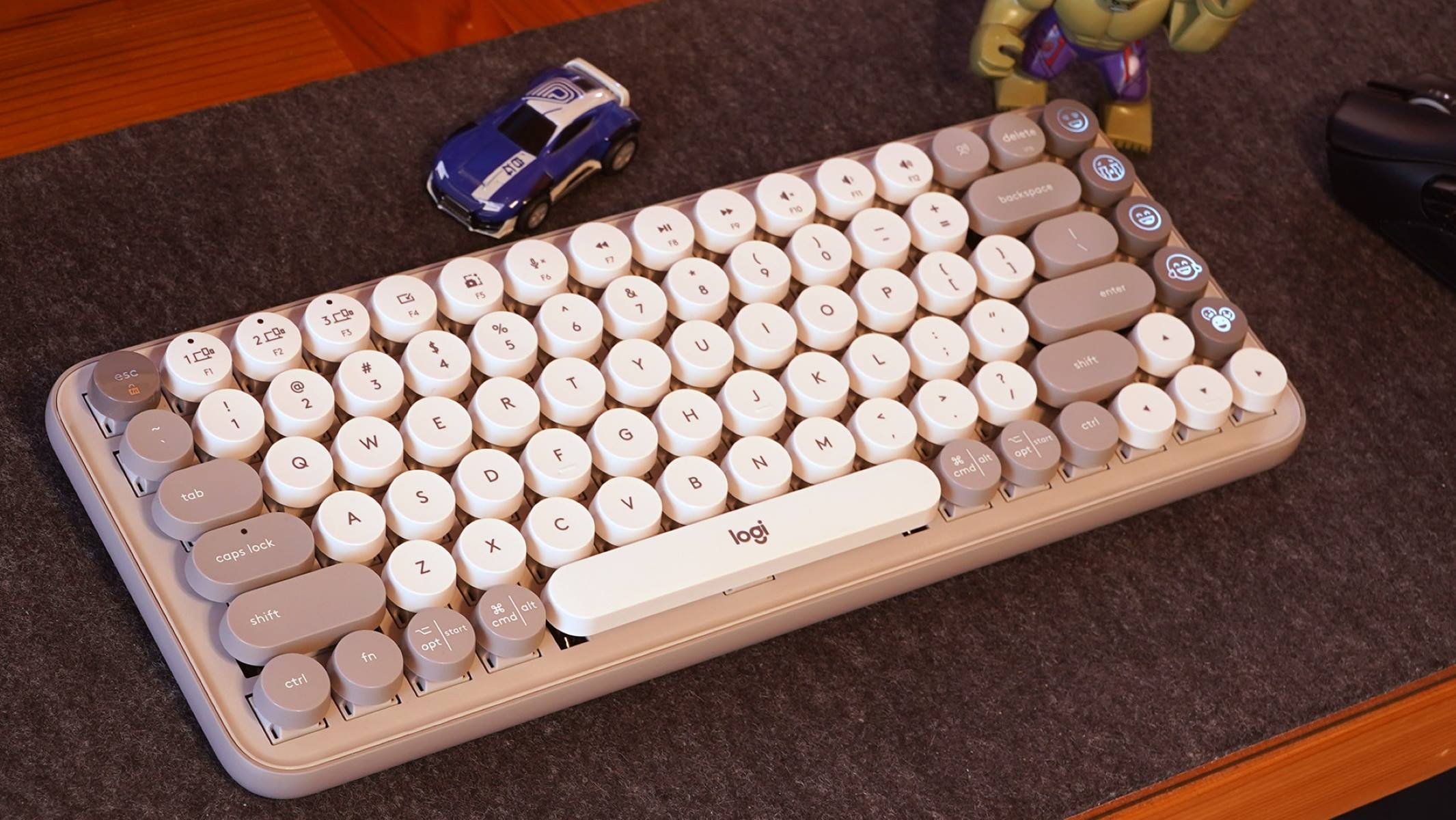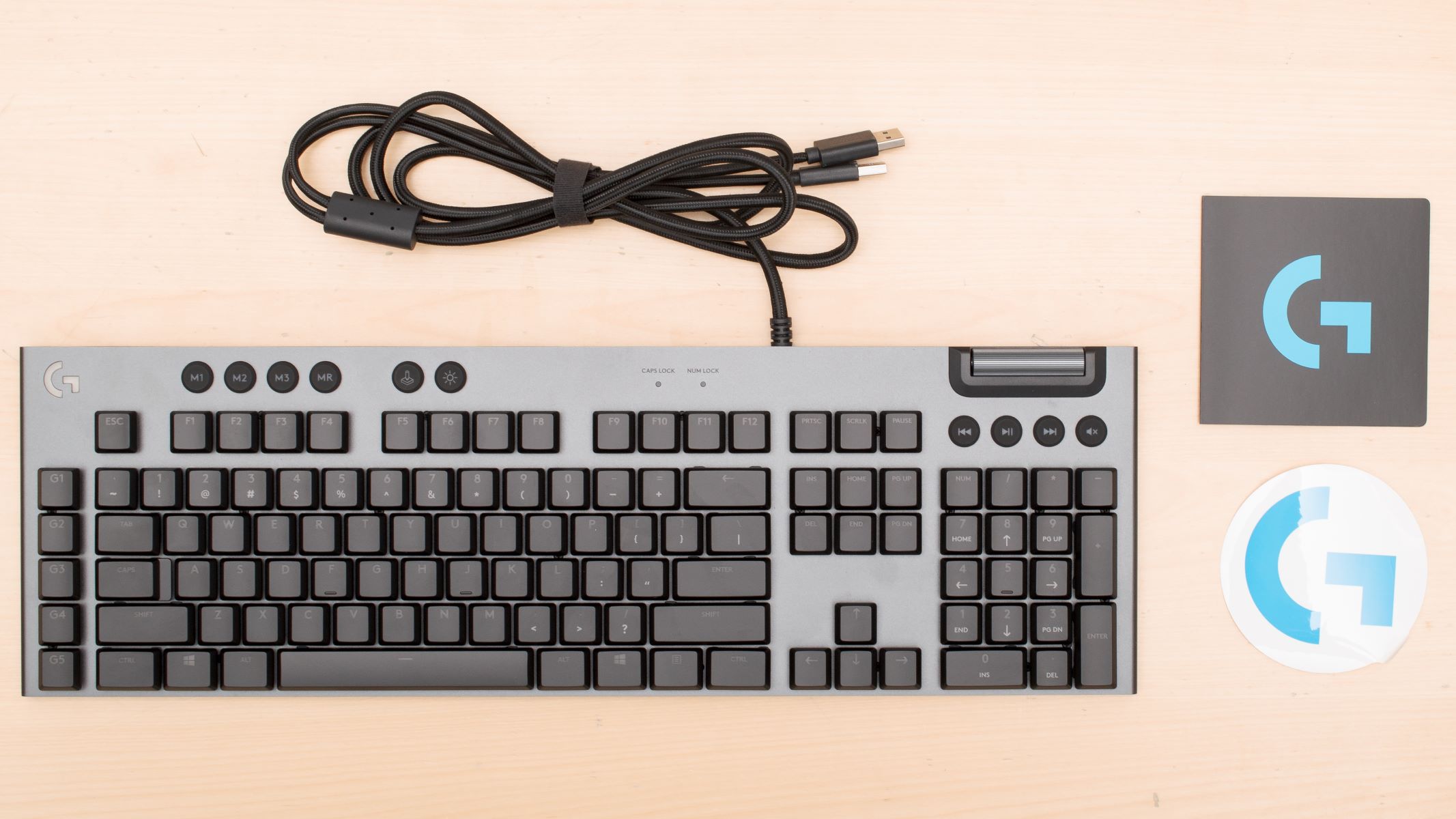Introduction
Mechanical keyboards have gained a loyal following among enthusiasts, gamers, and professionals alike due to their tactile feedback, durability, and overall typing experience. Unlike their membrane counterparts, which use a pressure pad to register key presses, mechanical keyboards feature individual switches for each key. This design not only enhances typing precision but also allows for a more customizable and responsive user experience.
The intricate mechanisms within a mechanical keyboard contribute to its distinct feel and performance. Understanding the anatomy and functionality of these keyboards can provide valuable insight into their appeal and functionality. In this article, we will delve into the inner workings of mechanical keyboards, exploring key components such as switches, keycaps, circuit boards, stabilizers, and the process of actuation and registering. By unraveling the complexities of these devices, readers can gain a deeper appreciation for the craftsmanship and engineering that goes into every keystroke.
Whether you are a seasoned mechanical keyboard enthusiast seeking to expand your knowledge or a newcomer curious about the hype surrounding these devices, this exploration of mechanical keyboard mechanics aims to shed light on their inner workings and the factors that set them apart from traditional keyboards. Join us as we embark on a journey through the intricacies of mechanical keyboards, uncovering the magic beneath the keys and gaining a newfound understanding of these beloved input devices.
Anatomy of a Mechanical Keyboard
At first glance, a mechanical keyboard may appear similar to its membrane counterpart, but a closer examination reveals a complex and robust internal structure that sets it apart. The anatomy of a mechanical keyboard encompasses several key components, each playing a crucial role in delivering the tactile feedback and responsive performance that enthusiasts cherish.
One of the most striking features of a mechanical keyboard is its individual switches for each key. These switches are the heart of the keyboard, determining the feel, sound, and actuation force required for each keystroke. Unlike membrane keyboards, which utilize a single rubber membrane to register key presses, mechanical keyboards rely on discrete switches that provide a distinct tactile feel and audible click, depending on the switch type.
Keycaps, the visible part of the keyboard, contribute not only to the aesthetics but also to the overall typing experience. These removable keycaps are often made of durable materials such as ABS or PBT plastic and can be customized to suit the user’s preferences, whether for ergonomic design, aesthetic appeal, or specific key functions.
The circuit board, or PCB (Printed Circuit Board), serves as the backbone of the keyboard, housing the electrical components and providing the necessary connections for the switches to communicate with the computer. The PCB layout can vary based on the keyboard’s design and features, with some keyboards incorporating backlighting, programmable keys, and advanced customization options.
Stabilizers, often found beneath larger keys such as the spacebar and shift keys, play a crucial role in ensuring consistent and smooth key presses. These components prevent key wobbling and enhance the overall stability and uniformity of the typing experience, particularly during intense gaming sessions or prolonged typing tasks.
Understanding the intricate anatomy of a mechanical keyboard sets the stage for a deeper exploration of its individual components, shedding light on the craftsmanship and engineering that contribute to its exceptional performance and user satisfaction.
Key Switches
Key switches are the defining feature of mechanical keyboards, dictating the tactile feedback, actuation force, and overall typing experience. These switches come in a variety of types, each offering distinct characteristics that cater to different user preferences and applications.
One of the most popular key switch brands, Cherry MX, offers a diverse range of switch types, including the Cherry MX Red, Blue, Brown, and Black switches. The Cherry MX Red switches, known for their linear feel and relatively low actuation force, are favored by gamers for their smooth and rapid keystrokes. On the other hand, the Cherry MX Blue switches are prized for their tactile feedback and audible click, making them a preferred choice for typists and enthusiasts who appreciate a satisfying key press sensation.
Similarly, the Cherry MX Brown switches strike a balance between tactile feedback and smooth actuation, appealing to users who desire a versatile switch suitable for both typing and gaming. Meanwhile, the Cherry MX Black switches offer a linear and heavier actuation, catering to individuals seeking a more robust and deliberate keystroke experience.
Besides Cherry MX switches, other reputable switch manufacturers such as Gateron, Kailh, and Razer have also developed their own switch variants, expanding the options available to mechanical keyboard enthusiasts. Gateron switches, for instance, are lauded for their smooth keystrokes and competitive pricing, making them a compelling alternative to the Cherry MX lineup.
Furthermore, the rise of custom mechanical keyboards has spurred innovation in the switch market, leading to the development of novel switch designs and features. Switches with optical technology, analog input, and hot-swappable capabilities have broadened the horizons of mechanical keyboard enthusiasts, offering enhanced performance and customization possibilities.
Understanding the nuances of key switches empowers users to make informed decisions when selecting a mechanical keyboard that aligns with their specific preferences and usage scenarios. Whether it’s for gaming, professional tasks, or general typing, the wide array of key switch options ensures that there’s a perfect fit for every individual seeking an exceptional typing experience.
Keycaps
Keycaps, the visible and tactile interface between the user and the keyboard switches, play a pivotal role in shaping the overall typing experience and aesthetic appeal of mechanical keyboards. These removable keycaps come in various shapes, materials, and profiles, offering users the opportunity to customize their keyboards to suit their preferences and ergonomic needs.
One of the primary considerations when selecting keycaps is the material used in their construction. ABS (Acrylonitrile Butadiene Styrene) and PBT (Polybutylene Terephthalate) are the two most prevalent materials employed in keycap manufacturing. ABS keycaps are known for their smooth texture and ability to retain vibrant colors, making them a popular choice for custom keycap sets and backlit keyboards. However, ABS keycaps are more prone to wear and shine over time compared to their PBT counterparts.
On the other hand, PBT keycaps are lauded for their durability, resistance to shine, and textured feel, providing a more robust and long-lasting typing surface. These keycaps are favored by enthusiasts and professionals who prioritize longevity and a premium typing experience. Additionally, PBT keycaps are less susceptible to developing a glossy appearance, maintaining their original texture and appearance even after extended use.
Keycaps also come in different profiles, with the most common being the OEM (Original Equipment Manufacturer) profile, Cherry profile, and SA (Spherical All) profile. Each profile offers a unique typing experience and aesthetic, with some catering to specific ergonomic preferences such as sculpted keycap shapes and varying key heights.
Customization is a hallmark of the mechanical keyboard community, and keycaps provide a canvas for personal expression and individuality. Artisan keycaps, often crafted by independent artisans, feature intricate designs and unique themes, adding a touch of personality to mechanical keyboards and serving as collectible pieces cherished by enthusiasts.
Furthermore, the emergence of double-shot and dye-sublimated keycaps has elevated the standard for keycap legends (the characters printed on the keycaps), enhancing durability and ensuring that legends remain crisp and legible over time. These advanced manufacturing techniques contribute to the longevity and visual appeal of keycaps, further enriching the user experience.
By understanding the significance of keycaps in the realm of mechanical keyboards, users can explore a myriad of customization options, from material selection and profile preferences to artisanal designs, ultimately tailoring their keyboards to reflect their unique style and ergonomic requirements.
Circuit Board
The circuit board, also known as the Printed Circuit Board (PCB), serves as the central nervous system of a mechanical keyboard, orchestrating the communication between the key switches and the computer while providing a platform for advanced features and customization options. The design and layout of the PCB significantly influence the functionality, aesthetics, and performance of the keyboard, making it a critical component in the realm of mechanical keyboards.
One of the defining characteristics of a mechanical keyboard’s PCB is its ability to support various key switch configurations, allowing for hot-swappability and customization. Hot-swappable PCBs enable users to effortlessly change key switches without soldering, facilitating seamless experimentation with different switch types and brands. This feature empowers users to tailor their typing experience to suit specific tasks or preferences, enhancing the versatility of their keyboards.
Moreover, PCBs often incorporate advanced functionalities such as per-key RGB lighting, programmable macros, and onboard memory for profile storage, elevating the user experience and enabling extensive customization. Keyboards equipped with RGB lighting features leverage the PCB to synchronize and control individual key illumination, creating stunning visual effects and enhancing the overall aesthetics of the keyboard.
Custom PCB designs have also become prevalent within the enthusiast community, allowing for unique layouts, ergonomic considerations, and specialized features. These custom PCBs cater to niche preferences, such as split keyboards, ortholinear layouts, and macro-centric designs, offering a tailored typing experience for users with specific ergonomic or workflow requirements.
Furthermore, the PCB layout influences the overall typing feel and responsiveness of the keyboard, as it determines the electrical pathways and signal processing for each key press. A well-designed PCB contributes to consistent actuation and register timing, ensuring a reliable and precise typing experience across the keyboard’s entire key matrix.
As the demand for customizable and feature-rich mechanical keyboards continues to grow, the role of the circuit board becomes increasingly pivotal in shaping the landscape of keyboard innovation. Whether it’s for gaming, professional use, or creative endeavors, the PCB serves as a dynamic platform for implementing cutting-edge technologies and user-centric features, propelling the evolution of mechanical keyboards to new heights.
Stabilizers
Stabilizers are essential components in mechanical keyboards, particularly for larger keys such as the spacebar, shift keys, and enter key, ensuring consistent and smooth key presses across the keyboard. These mechanical stabilizers mitigate key wobbling and provide uniform key movement, contributing to a stable and reliable typing experience.
One of the primary functions of stabilizers is to maintain keycap alignment and prevent lateral movement during key presses. This is achieved through a combination of stabilizer wires, stabilizer housings, and stabilizer inserts, which work in tandem to guide and support the movement of larger keys, reducing the potential for uneven actuation and key binding.
Stabilizer wires, often made of metal, connect to the keycap and stabilizer housing, facilitating a balanced and controlled keystroke. The stabilizer housing, typically composed of plastic, houses the stabilizer wire and serves as a guide for the keycap’s vertical movement, ensuring that it remains level and stable during use. Stabilizer inserts, which interface with the keycap and stabilizer wire, further enhance key stability and reduce friction, contributing to a smoother key press.
Understanding the nuances of stabilizer types and configurations allows users to tailor their keyboard’s stabilizing mechanism to suit their preferences. For instance, Cherry-style stabilizers, recognized for their ease of maintenance and customization, are a popular choice among enthusiasts due to their compatibility with custom keycap sets and straightforward disassembly for lubrication and tuning.
Moreover, the implementation of screw-in stabilizers has gained traction within the mechanical keyboard community, offering enhanced stability and reduced key rattle compared to traditional snap-in stabilizers. This advancement provides a more secure and consistent stabilizing solution, particularly for users seeking a premium typing experience with minimal keycap movement and noise.
Stabilizers play a pivotal role in shaping the overall typing feel and acoustics of a mechanical keyboard, influencing factors such as key travel, bottom-out sound, and key return speed. By fine-tuning stabilizer configurations and applying lubricants to reduce friction, users can achieve a refined and satisfying typing experience, free from distracting key wobble and inconsistent key movement.
As the quest for an optimal typing experience continues to drive innovation in the mechanical keyboard landscape, stabilizers remain a crucial element in delivering stability, consistency, and user satisfaction. By understanding the intricacies of stabilizer design and customization, users can unlock the full potential of their mechanical keyboards, ensuring a seamless and enjoyable typing journey.
Actuation and Registering
Actuation and registering are fundamental processes that underpin the functionality and responsiveness of mechanical keyboards, influencing the timing, precision, and tactile feedback of key presses. Understanding these mechanisms provides valuable insight into the nuances of typing on a mechanical keyboard and the factors that contribute to its distinct feel and performance.
Actuation refers to the point at which a key press is recognized and a signal is sent to the computer, initiating the input command. This process is determined by the actuation force and distance required for a key to register a keystroke. Different key switch types offer varying actuation characteristics, such as linear, tactile, and clicky responses, catering to diverse user preferences and typing styles.
For example, Cherry MX Red switches feature a linear actuation, meaning that the key press is registered with a consistent force and smooth keystroke, making them popular among gamers and users who prioritize rapid input commands. On the other hand, tactile switches like the Cherry MX Brown provide a noticeable bump upon actuation, offering typists and enthusiasts a discernible tactile feedback without an audible click, enhancing typing accuracy and feedback.
Registering, the subsequent phase of the key press process, involves the transmission of the registered keystroke to the computer, where it is recognized and translated into the corresponding input. The timing and consistency of registering are critical factors that impact the overall typing experience, particularly in fast-paced activities such as gaming and professional tasks.
Advanced features such as N-key rollover (NKRO) and anti-ghosting technology further enhance the registering capabilities of mechanical keyboards, allowing for simultaneous key presses without input conflicts or missed keystrokes. This capability is especially valuable for gamers and users who demand precise and reliable input recognition, ensuring that every keystroke is accurately captured and translated into the intended action.
Furthermore, the actuation and registering processes are influenced by the key switch design, PCB layout, and firmware optimization, with each element contributing to the overall responsiveness and accuracy of the keyboard. Firmware updates and customization software provide users with the flexibility to fine-tune actuation and registering parameters, tailoring the keyboard’s behavior to suit specific preferences and usage scenarios.
By delving into the intricacies of actuation and registering, users can gain a deeper appreciation for the precision and craftsmanship that define the mechanical keyboard experience. Whether it’s for gaming, professional tasks, or creative endeavors, the seamless and reliable actuation and registering processes form the cornerstone of a satisfying and immersive typing journey on a mechanical keyboard.
Conclusion
The intricate world of mechanical keyboards encompasses a symphony of components and processes that converge to deliver a tactile, responsive, and customizable typing experience. From the individual switches and keycaps to the circuit board, stabilizers, and the actuation and registering processes, every facet of a mechanical keyboard contributes to its allure and functionality.
As users embark on their journey through the realm of mechanical keyboards, they encounter a diverse array of switch types, each offering a unique tactile feedback and actuation force. Whether it’s the smooth keystrokes of linear switches, the pronounced tactile bump of tactile switches, or the audible click of clicky switches, the world of key switches presents a spectrum of options to cater to individual preferences and usage scenarios.
Keycaps, often overlooked but essential to the user interface, provide a canvas for personal expression and ergonomic customization. The choice between ABS and PBT keycaps, different profiles, and the emergence of artisan keycap designs empowers users to craft a keyboard that not only performs impeccably but also reflects their unique style and personality.
Delving into the heart of a mechanical keyboard, the circuit board serves as a dynamic platform for advanced features, customization options, and innovative layouts. Whether it’s hot-swappability, per-key RGB lighting, or custom PCB designs, the circuit board propels the evolution of mechanical keyboards, offering users a playground of possibilities to tailor their typing experience.
Stabilizers, often overshadowed by their smaller counterparts, play a pivotal role in ensuring consistent and stable key presses, particularly for larger keys. The choice between Cherry-style stabilizers and screw-in stabilizers, along with the application of lubricants, allows users to fine-tune their keyboard’s stabilizing mechanism, enhancing the overall typing feel and acoustics.
Finally, the actuation and registering processes, fundamental to the keyboard’s functionality, underscore the precision and responsiveness that define the mechanical keyboard experience. With advanced features such as N-key rollover and firmware customization, users can fine-tune the actuation force, distance, and registering parameters to achieve a seamless and reliable typing journey.
As users immerse themselves in the world of mechanical keyboards, they discover a realm of craftsmanship, customization, and innovation that elevates the act of typing into a captivating and personalized experience. From the satisfying click of a key press to the visual allure of artisan keycaps, the mechanical keyboard journey is a testament to the artistry and engineering that converge beneath every keystroke.







